Recognising the Hoard
The hoard of the original tabernacle furniture has continually existed over time. The only thing that changed about it all was the words used when talking about it. This caused it to lose its identity. It just dropped out of sight mainly because everyone failed to recognise they were all talking about the same treasure. You know already that the medieval french word for an ornate serving bowl, ‘graal’ has mutated in the stories so it is called the ‘Holy Grail’. Another of the items in the hoard is the huge Temple menorah. We can all readily identify what is being spoken about when the word menorah is used; we are talking about a particularly Jewish form of a lamp stand with branched arms.
What about then if the word ‘candlestick’ was used instead of menorah? ‘Candlestick’ is the word used in the english language version of the Bible when speaking about the Temple menorah. You can identify that ‘candlestick’ in the Bible refers to a menorah by its context. Would you recognise that the menorah is being spoken about in the various legends that speak of a lost ‘church’ treasure on an island?
Let’s follow the hoard through time and legend. Though it can be tracked easily when you know what is being spoken about, the names used for it just changed. In some cases it was because the person relating the story was deliberately concealing the hoard’s identity. In other cases it was because the person telling the story didn’t realise what it was they were actually talking about or searching for. Just recognise what is really being referred to in the various inventories when a ‘lost treasure’ is being spoken about. A good starting point is the inventory from the Emeq HaMelekh. The swords and gemstones listed in it are things that are easily identifiable. Ubilla also added to the Temple furniture hoard he moved from Spain some 800 barrels of newly minted coins from Potosi when he whisked the lot away into the Pacific.
Le Conte del Graal by Chretien de Troyes
“Two more attendants then entered, bearing in their hands candelabra of fine gold inlaid with niello. Handsome indeed were the attendants carrying the candelabra. On each candelabrum then candles, at the very least, were burning. Accompanying the attendants was a beautiful, gracious, and elegantly attired young lady holding between her two hands a bowl. When she entered holding this serving bowl (graal), such brilliant illumination appeared that the candles lost their brightness just as the stars and the moon do with the appearance of the sun. Following her was another young lady holding a silver carving platter. The bowl, which came first, was of fine pure gold, adorned with many kinds of precious jewels, the richest and most costly found on sea or land, those on the bowl undoubtedly more valuable than any others. Exactly as the lance had done, the bowl and the platter passed in front of the bed and went from one room into another.”
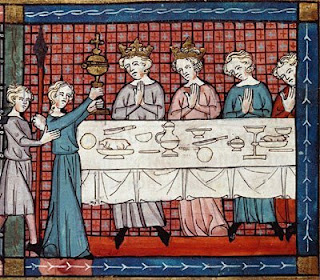
The veiled tally for the Royal Society
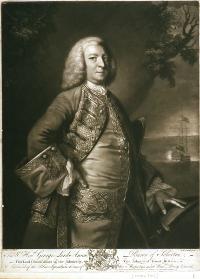
The Keating inventory
“We have buried at a depth of four feet in the red earth:
1 chest: altar trimmings of cloth of gold, with baldachins, monstrances, chalices comprising 1,244 stones.
1 chest: 2 gold reliquaries weighing 120 pounds, with 624 topazes, cornelian and emeralds, 12 diamonds.
1 chest: 3 reliquaries of cast metal weighing 160 pounds, with 860 rubies and various stones, 19 diamonds.
1 chest: 4,000 doubloons of Spain marked 8. 5,000 crowns of Mexico. 124 swords, 64 dirks, 120 shoulder belts. 28 rondaches.
1 chest: 8 caskets of cedar-wood and silver, with 3,840 cut stones, rings patens and 4,265 uncut stones.
28 feet to the north-east, at a depth of 8 feet in the yellow sand: 7 chests with 22 candelabra in gold and silver weighing 250 pounds, and 164 rubies a foot.
12 armspans west, at a depth of 10 feet in the red earth: the seven-foot Virgin of gold, with the Child Jesus and her crown and pectoral of 780 pounds, rolled in her gold chasuble on which are 1,684 jewels. Three of these are 4-inch emeralds on the pectoral and 6 and 6-inch topazes on the crown. The seven crosses are of diamonds.”
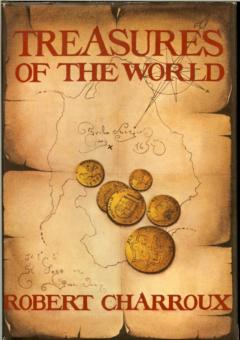
Benito Bonito's inventory
Site 1: 300,000 pounds weight of silver bars, plate and coin in a cave in the side of a mountain.
Site 2: 733 bars of gold 4 inches long by 2 inches thick. 273 gold hilted swords inlaid with jeweled chests, ornaments and vessels.
Site 3: Several iron kettles filled with gold coin.
Note: Searchers thought the triangle shown on their copy of the monument map was marking the location of 3 deposits on the island.
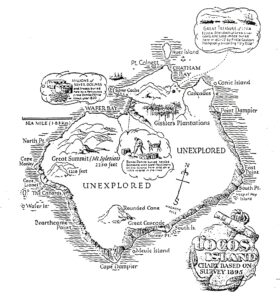
Treasure map for Horseshoe Island, Costa Rica
It is called Horseshoe Island as it is in Horseshoe Bay.
The details have been struck out by someone thinking they are keeping the location and cave entrance a secret. They should have talked to Treasures R Us. For those interested the legend says:
xx rocks
//// rising ground
← peak of hill feet
← slopes of hill
☼ approx. position of Cave.
3 or 4 steps made down to cave.
2 or 3 chambers constructed for
Division of treasure(coins,bullion
and Church plate & jewellery)
From verbal information given to Claud Robinson
by native informer who was friend of the pirate’s
friend.
Pirate died in Guatemala City
.
Rough copy of Pirates’ chart made on his (the
pirate) deathbed.
Coastal marks (land and sea), figures (in
Fathoms) and hill taken from official marine
Charts (English & American).
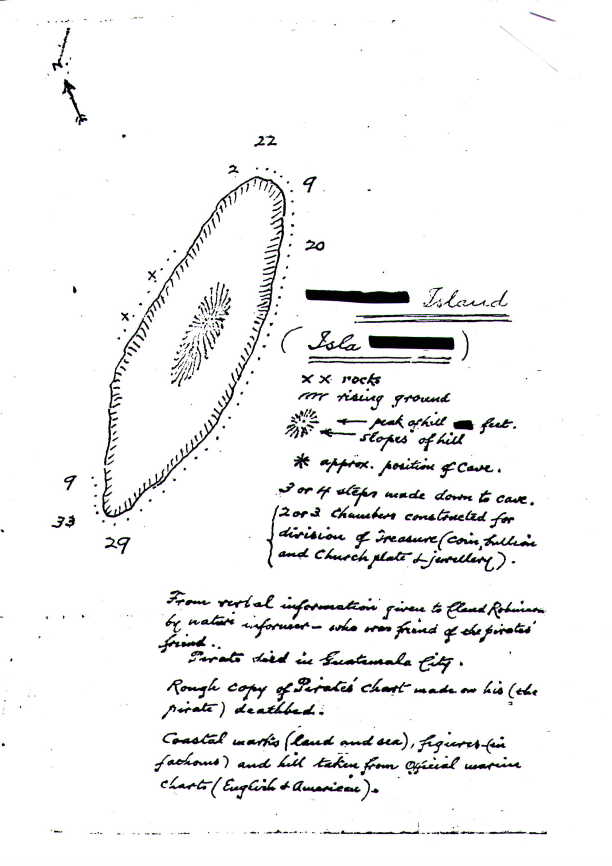
Trinidade Island
From E.F.Knight,
“…under the mountain known as the Sugarloaf-there was an immense treasure buried consisting principally of golden plate and ornaments, the plunder of Peruvian churches which certain pirates had concealed there in the years 1821. Much of this plate he said, came from the cathedral of Lima, having been carried away from there during the war of independence, when the Spaniards were escaping the country, and that among other riches there were several massive golden candlesticks.”

The Inventory left by Captain James Brown
14 tons gold ingots
7 golden candlesticks, encrusted with jewels
38 long diamond necklaces
A quantity of jewelled rings
A quantity of jewelled crucifixes
A quantity of jewelled bracelets
1 chest of Spanish doubloons
1 chest of uncut stones
Various other jewels and ornaments
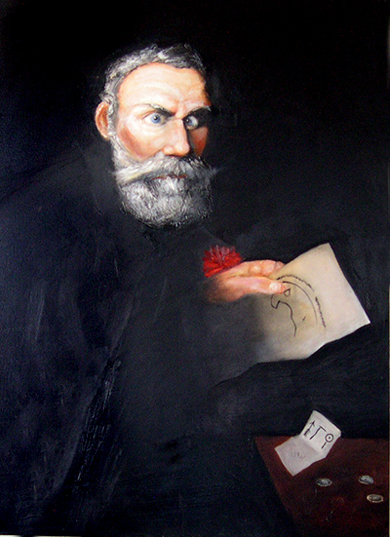
Blame it on the Angel
In 1823 Joseph Smith Jnr claimed to have found golden plates in a stone box buried on a hill named Cumorah after the box’s location was revealed by an angel named Moroni. Cumorah does suspiciously sound like Comora (an old spelling of Comoros) and Moroni like Moroni (a settlement in the Comoros Islands where Captain Kidd hung around) but after all, Smith did have a reputation for seeking Kidd’s lost treasure in America. Both he and his father, Joseph Smith Snr were Freemasons. The translation of the text on the golden plates made by Smith (using a scrying stone in the bottom of a hat) related the history of some ancient Israelites who were led to America by God at the time of the fall of Babylon around 586 BC. This meant the Americans were of the Tribe of Judah! (There seems to be a gap in the logic for this as wouldn’t the lineage only be through those native Americans who were the direct descendants of those from the 586 BC diaspora? Perhaps there was a 19th century plan to intermarry with the locals.) Unfortunately Moroni required the return of the golden plates so they couldn’t be produced as proof so in substitute of them a description of the fabulous Cave of Treasure on Cumorah Hill into which the plates were deposited was given instead. The best recorded description given by Smith of this cave and its contents only ever amounted to that it contained ‘tons of choice treasures and records’. By 1874, through various retellings of the story by those who had heard Smith speak of the cave, its contents had been elaborated upon so now “there was great wealth in the room in sacred implements, vestments, arms, precious metals and precious stones, more than a six-mule team could draw.” None of these inconsistencies in the story prevented the treasure hunter, Joseph Smith Jnr, from founding what was to become the Mormon religion with its claim to true to legitimacy.
Things don’t stop there as the name Smith is associated with another location this treasure was mistakenly searched for. It was a ‘John Smith’ who purchased Lot 18 on Oak Island where the Money Pit was ‘discovered’. And there is a little known fact about a particular search made on Oak Island by Joseph Smith Jnr’s 34th ‘celestial’ wife. She was still searching for the same treasure. Who else do you think the ‘Fanny Young Pit’ on Oak Island was named after?
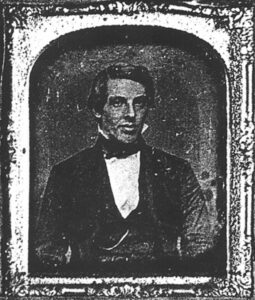
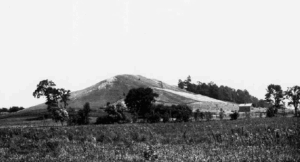
Otto Rahn and the lost candlesticks
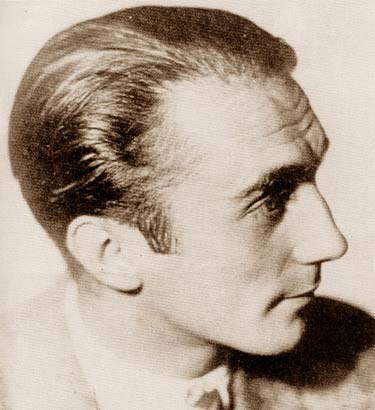
In the early 1930s, a young philology graduate and historian named Otto Rahn, had, through his study of ancient manuscripts and the story ‘Parzival’ by Wolfram von Eschenbach, become convinced that a fabulous lost treasure was to be found in the grottoes and caves of the French Pyrenees. His book published in 1933, ‘Kreuzzug geggen den Grail’ (Crusade Against the Grail), sets out his beliefs. Unfortunately the artistically inclined Rahn fell in with the Nazis who in those times encouraged various studies into arcane history that supported the National Socialist worldview. There is some controversy whether Rahn fully embraced Nazi ideals or whether he sided with the devil out of necessity as artistic types tended to starve on the streets in those days. One way or the other Rahn ended up as an SS Leutnant working under the direct command of no less than Reichsfuhrer Heinrich Himmler himself. This was certainly not a good move, for Der Reichsfuhrer’s preferred image was that of his SS men hand in hand with Aryan maidens, whereas Rahn’s preferred image was that of himself hand in hand with other men. Indiscretions of this sort resulted in him being disciplined with punishment tours of duty at Auschwitz concentration camp. Even though this was before Auschwitz descended into the worst excesses of Nazi hell, what Rahn witnessed there made him realise he had sold his soul and was now wearing the mark of the Beast. In the middle of March 1939 Rahn went to Soll in the Tyrolean Mountains. After walking along an alpen track alone, he ingested sleeping pills before he froze to death in the snow.
The important detail for the present is that through his study of the medieval romance ‘Parzival’ Rahn became convinced that Eschenbach’s book was no mere work of fiction. Rahn believed that Wolfram Eschenbach was referring to a real treasure at a real location and was giving clues to find it.
In Eschenbach’s book the knight Parzival sought the ‘Gral’ said to be a Stone, the ‘Lapsit exillis’, at ‘Munsalvaesche’ (Wild Mountain). This was guarded by warlike knights, the ‘Templeisen’. Eschenbach’s allusions to the colours black and white at the beginning of the story does infer the knights to be the Templars as their Battle Standard (identifying flag), the Beaucent, was a simple partition of equal black and white.
Rahn suspected that Eschenbach’s ‘Munsalvaesche’ was actually the mountain citadel of Montsegur in the French Pyrenees. In 1234, Montsegur was the last stronghold of the Cathars who, after a 34 year crusade started in 1209 by King Louis IX on order of Pope Innocent III, ran from the citadel into the waiting pyres to take their lives as free men rather than surrender to the besieging forces. The traditional history of Montsegur spoke of four knights that had escaped the fortress the night before the mass suicide carrying the Cathar treasure inferred to be the Holy Grail.
In Rahn’s view of history the hoard was ‘Solomon’s Treasure’. These were the vast riches looted from the Temple of Jerusalem in 70AD by the victorious Roman Legions at the bloody conclusion to a Jewish insurrection that ultimately led to the total destruction of that nation.
In turn, this treasure was looted from Rome by the Visigothic king Alaric around 410AD during the last gasps of the expiring Roman Empire. Alaric was supposed to have hidden it somewhere in the region encompassing the south of France and the north of Spain. It is the same treasure with this unique jewish/roman/visigothic line of succession that De Sede identified as being ‘Le Tresor Maudit’ for Rennes le Chateau.
A strange addendum to all this is the story regarding the Reichsfuhrer’s excursion to Montserrat Abbey during a visit to fascist Spain in October of 1940. According to Andreu Ripol Noble, a German speaking monk at the time, Himmler was seeking the Holy Grail. Visiting other castles in the area, a picture exists of Himmler standing outside a castle at Quermanco holding a copy of Rahn’s book. The circumstances of these inspections are not suggestive of a concerted search effort being mounted by the Reichsfuhrer for the Third Reich, more like that Himmler was taking a jaunt to satisfy his own curiosity of the subject raised by Rahn.
Colonel Howard Buechner was a medical officer in the 45th Infantry Division in World War 2 and was the first American physician to enter Dachau Concentration camp on the 29th of April, 1945. It seems that after witnessing the vast amounts of looted works of antiquities hoarded by the Nazis (and no doubt access to intriguing documents when cleaning up the wreckage of the Nazi regime) he became interested in the subject of Otto Rahn and his treasure hunt. Buechner’s book, whose title was given previously, sets out his findings and beliefs in the subject, one of which was that Rahn had located the ‘Treasure of Solomon and the Emerald Cup’ (the Emerald Cup being some ancient grail like object originating from Abraham’s first temple at Ur). It was believed this fabulous treasure of antiquity had ended up stockpiled with other Nazi loot at a salt mine in Merkers but was slowly dispersed prior to the arrival of the US 3rd Army under Patton who captured the mine and its other contents intact.
Buechner refers to it as the “Treasure of the Ages” in his book and the inventory he gives of it makes interesting reading.
“The treasure consisted of items in six categories:
1. Thousands upon thousands of gold coins, some of which dated back to the early days of the Roman Empire.
2. Items which were believed to have come from the Temple of Solomon which included the gold plates and fragments of wood which had once made up the Ark of Moses. Identification of the object was somewhat uncertain because most of the wooden parts had rotted away as the centuries took their toll. However, the accompanying items lent strong evidence that the partially decomposed relic was indeed the Ark of the Covenant. There was a gold plated table, a candelabrum with seven branches, a golden urn, a staff, a harp, a sword, innumerable golden plates and vessels, many small bells of gold and a number of previous jewels and onyx stones, some which bore inscriptions. And, of course, there were other less well known objects too numerous to be mentioned in this account.
3. Twelve stone tablets bearing pre-runic inscriptions which none of the experts were able to read. These items comprised the stone Grail of the Germans and of Otto Rahn.
4. A beautiful silvery Cup with an emerald-like base made of what appeared to be jasper. Three gold plaques on the Cup were inscribed with cuneiform script in an ancient language.
5. A large number of religious objects of various types which were unidentifiable as to time and significance. However, there were many crosses from different periods which were of gold or silver and adorned with pearls and previous stones.
6. Precious stones in abundance in all sizes and shapes.”
There was a simple error that Otto made that misdirected him into a dead end. It was caused by his assumption that there was only one set of the Temple furniture and this had been looted by Titus and his Legions.
This creates a logical conundrum; if the hoard was looted from Rome by the Visigoths how then did the Templars get hold of it so that Eschenbach could go on to write about them guarding it?
It was a question Otto never asked nor answered.

